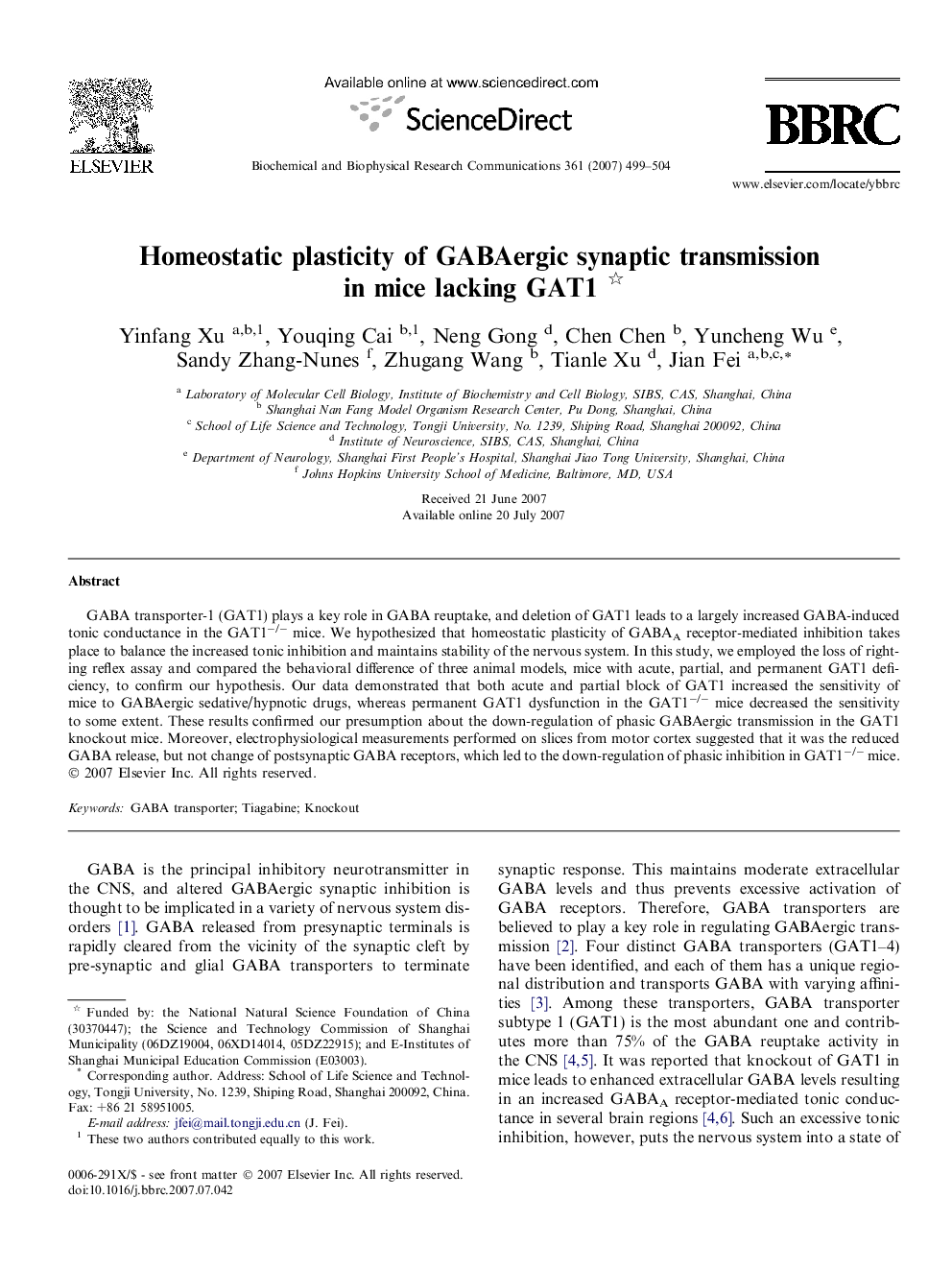| Article ID | Journal | Published Year | Pages | File Type |
|---|---|---|---|---|
| 10767091 | Biochemical and Biophysical Research Communications | 2007 | 6 Pages |
Abstract
GABA transporter-1 (GAT1) plays a key role in GABA reuptake, and deletion of GAT1 leads to a largely increased GABA-induced tonic conductance in the GAT1â/â mice. We hypothesized that homeostatic plasticity of GABAA receptor-mediated inhibition takes place to balance the increased tonic inhibition and maintains stability of the nervous system. In this study, we employed the loss of righting reflex assay and compared the behavioral difference of three animal models, mice with acute, partial, and permanent GAT1 deficiency, to confirm our hypothesis. Our data demonstrated that both acute and partial block of GAT1 increased the sensitivity of mice to GABAergic sedative/hypnotic drugs, whereas permanent GAT1 dysfunction in the GAT1â/â mice decreased the sensitivity to some extent. These results confirmed our presumption about the down-regulation of phasic GABAergic transmission in the GAT1 knockout mice. Moreover, electrophysiological measurements performed on slices from motor cortex suggested that it was the reduced GABA release, but not change of postsynaptic GABA receptors, which led to the down-regulation of phasic inhibition in GAT1â/â mice.
Keywords
Related Topics
Life Sciences
Biochemistry, Genetics and Molecular Biology
Biochemistry
Authors
Yinfang Xu, Youqing Cai, Neng Gong, Chen Chen, Yuncheng Wu, Sandy Zhang-Nunes, Zhugang Wang, Tianle Xu, Jian Fei,
